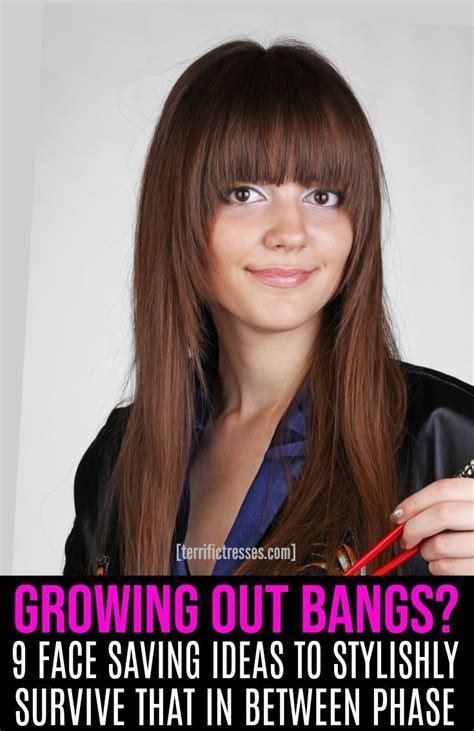Light hair bangs, often referred to as “baby bangs” or “micro bangs,” have emerged as a chic and versatile hairstyle that complements a wide range of face shapes and hair textures. These wispy, delicate fringes frame the face and add a touch of youthful whimsy to any look.

The Benefits of Light Hair Bangs
- Flattering: Light bangs can visually balance out a large forehead, soften angular features, and emphasize eyes.
- Versatile: They can be styled in various ways, from blunt and straight to feathered and choppy, to suit different face shapes and preferences.
- Youthful: The wispy nature of light bangs creates a youthful and playful appearance.
- Low-maintenance: Compared to thicker bangs, light bangs require less upkeep and can be easily styled with minimal effort.
Choosing the Right Light Bangs for Your Face Shape
- Oval: Most light bang styles flatter oval faces, including blunt, side-swept, and textured bangs.
- Round: Light, side-swept bangs can help elongate a round face and create a more angular appearance.
- Square: Wispy, textured light bangs can soften the strong jawline of a square face.
- Heart: Blunt, micro bangs can draw attention to the eyes and forehead, creating a more balanced look.
- Oblong: Light bangs with a slight arch can shorten the length of an oblong face.
How to Style Light Hair Bangs: A Step-by-Step Guide
Step 1: Prep Clean, Dry Hair
Wash and towel-dry your hair before styling.
Step 2: Section Off Bangs
Use a comb to create a triangular section of hair from the top of your forehead to the arch of your eyebrows.
Step 3: Trim Bangs
Hold the hair at a 45-degree angle and trim small sections at a time, working from the center of the bangs outward.
Step 4: Style with a Blow Dryer
Direct the airflow from your blow dryer downward to smooth out the bangs and create volume.
Step 5: Use a Round Brush
Use a round brush to curl the bangs inward for a more polished look or outward for a more textured effect.
Step 6: Finish with Hairspray
Apply a light hold hairspray to hold the bangs in place and prevent frizz.
Light Hair Bangs and Hair Texture
Light bangs can complement all hair textures, but it’s important to consider how your hair’s natural texture will affect the styling process:
- Straight: Light bangs on straight hair are easy to style and maintain, but may require regular trimming to prevent split ends.
- Wavy: Wavy hair creates a more textured and voluminous appearance with light bangs.
- Curly: Light bangs can be challenging to style on curly hair, as they may curl up or frizz easily.
- Coily: Coily hair requires more moisture and careful styling to prevent damage. Light bangs on coily hair can be achieved through micro-braiding or crocheting.
Table 1: Light Hair Bangs for Different Face Shapes
| Face Shape | Recommended Bangs |
|---|---|
| Oval | Blunt, side-swept, textured |
| Round | Side-swept, wispy |
| Square | Wispy, textured |
| Heart | Blunt, micro |
| Oblong | Arched, side-swept |
Table 2: Light Bangs Styling Techniques
| Technique | Effect |
|---|---|
| Blow drying with round brush | Polished, voluminous |
| Curling inward with iron | Curved, feminine |
| Curling outward with iron | Textured, messy |
| Razor cutting | Thin, wispy |
| Point cutting | Adds movement and volume |
Table 3: Light Bangs and Hair Texture
| Hair Texture | Considerations |
|---|---|
| Straight | Easy to style, may require regular trimming |
| Wavy | Textured, voluminous |
| Curly | Challenging to style, may require moisture |
| Coily | Micro-braiding or crocheting for bangs |
Table 4: Light Bangs Maintenance Tips
| Tip | Benefits |
|---|---|
| Trim regularly | Prevents split ends and maintains shape |
| Avoid over-washing | Keeps bangs healthy and prevents damage |
| Use nourishing hair care products | Adds moisture and prevents breakage |
| Protect from heat | Blow drying and flat ironing can cause damage |
| Avoid brushing when wet | Wet hair is more prone to breakage |
FAQs
Q: How often should I trim my light bangs?
A: Depending on your hair growth rate, you should trim your bangs every 3-4 weeks to maintain their shape and prevent split ends.
Q: How can I prevent frizz in my light bangs?
A: Use a frizz-control shampoo and conditioner, and apply a serum or spray specifically designed to tame frizz.
Q: Can light bangs damage my hair?
A: If trimmed and styled properly, light bangs should not damage your hair. However, over-styling or using heat tools too frequently can lead to breakage.
Q: Are light bangs suitable for all hair colors?
A: Yes, light bangs can complement all hair colors, but they are particularly flattering on lighter shades of hair, as they create a subtle contrast.
Q: Can I cut light bangs at home?
A: While it is possible to cut light bangs at home, it is recommended to consult a professional hairstylist for precision and the best results.
Q: How can I style light bangs with short hair?
A: Side-swept or wispy light bangs can be incorporated into short hairstyles by creating a slight angle and blending them with the rest of the hair.
Q: Can I wear light bangs with glasses?
A: Yes, light bangs can be worn with glasses, but it is important to choose bangs that complement the shape of your glasses and frame to avoid clutter.
Q: What are some creative ways to style light bangs?
A: You can create unique and eye-catching styles with light bangs by experimenting with different angles, textures, and accessories, such as headbands or hair clips.
